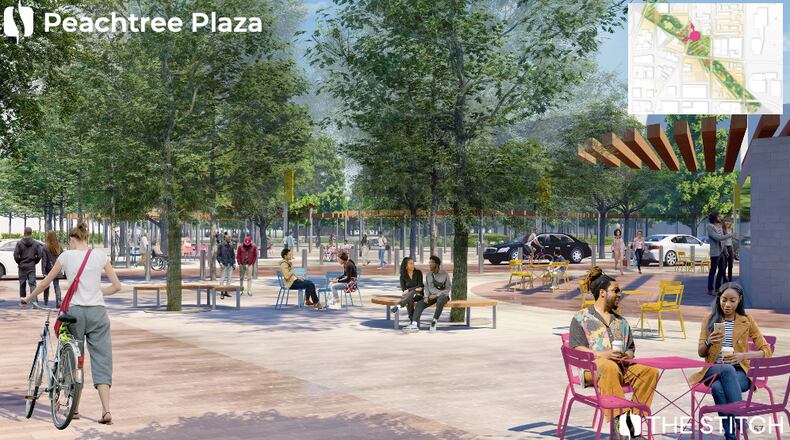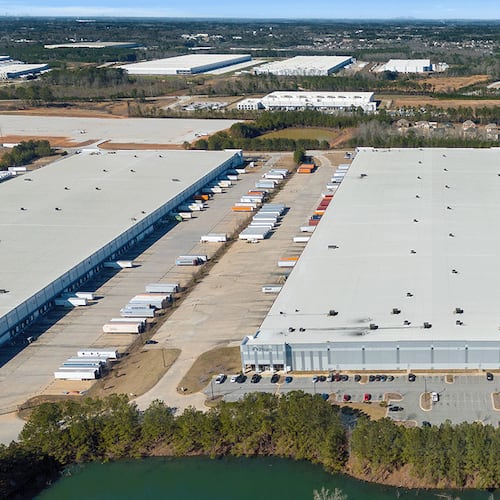A pedestrian plaza and native plants garden will sit on top of a section of the Downtown Connector when the first phase of The Stitch is completed, according to new designs made public Wednesday.
That could be as soon as 2029 or 2030 at the latest, officials behind the project said at a town hall hosted by Central Atlanta Progress and the Atlanta Downtown Improvement District.
“For those of you who don’t think this is happening, it’s happening,” said A.J. Robinson, president of the two groups, which originated the idea for The Stitch.
The Stitch has been a dream for years, pitched as a way of reconnecting downtown neighborhoods that were divided when the highways were built and sliced up the city in the 1950s and ‘60s. The plan is to create a 14-acre greenspace over the interstate.
Roughly $200 million has been secured for the project so far, with $157.6 million coming from a federal grant. The total cost is estimated at $713 million.
Credit: Central Atlanta Progress
Credit: Central Atlanta Progress
Jack Cebe, who is overseeing the project, said the first phase is meant to showcase elements of the entire vision. It includes “a little something for everyone” and the hope is it will build momentum to raise money for phases two and three.
The plans for the first phase, which accounts for a 4-acre chunk of the project, were designed with feedback from numerous listening sessions and surveys, Cebe said. More than 4,000 Atlantans have weighed in on what they want from the project so far.
“The community told us that we wanted this to be a gathering place, a civic destination,” he said. “A place to escape the heat and the hustle and bustle of the city.”
The first phase would cap the section of the Downtown Connector between Peachtree Street and Ralph McGill Boulevard. The resulting square would be divided diagonally.
A pollinator garden with winding paths and native plants will go on one end along Courtland and Currier streets. The other half of the square, along Peachtree and Ralph McGill, will feature a pedestrian plaza with seating, restrooms and a concession area, a water feature, a shade structure and numerous trees.
Future phases would include a grassy lawn and amphitheater, along with more wooded areas. The project also calls for widening sidewalks, adding bike lanes and improving access to MARTA’s Civic Center station.
“It’s about better utilization of the streets,” Cebe said.
The project also intends to pay homage to the historically Black neighborhoods that were demolished and displaced when the highways were built, though it’s unclear exactly what form that will take. A historian was hired to interview former residents and descendants of the affected neighborhoods, and the plan is to showcase their stories in some way.
“We can’t fix everything that went wrong but we’re trying to restore some of what was,” Cebe said. “The next step is to understand what actions would help right those wrongs from the past from the perspective of community members.”
The full project is currently slated for completion in 2036, contingent on funding.
Construction on phase one is expected to start in 2026. Construction on phase two, which would build out 4 acres of surrounding the Civic Center station, would start in 2029. Work on the last phase, a 6-acre chunk south of Ralph McGill Boulevard, would begin in 2033.
The Stitch phase one: Before and After
About the Author
Keep Reading
The Latest
Featured




